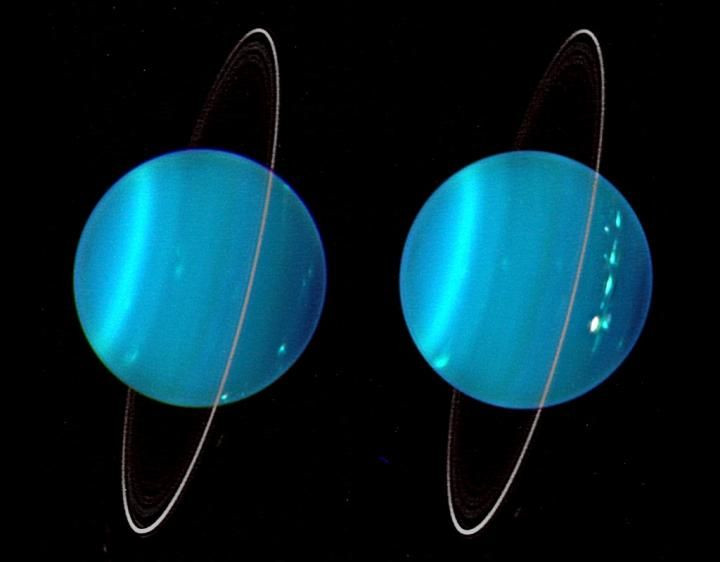NASA Set To Explore Ice Giant Planets Using Advanced Next-Generation Instruments

Technology has advanced since NASA’s Galileo mission, which set out to investigate Jupiter’s atmosphere and the causes of its massive atmospheric circulation.
NASA scientists and the Goddard Space Flight Center in Greenbelt, Maryland are taking steps to create a smaller and advanced net flux radiometer to be used to explore Uranus and Neptune. The instrument tells scientists where cooling and heating occurs in a planet’s atmosphere. This will define the importance of heat sources, whether planetary or solar, that affect atmospheric circulation.
“The next-generation radiometer is specifically being developed to study the atmospheres of Uranus or Neptune, but could be used on any target with an atmosphere,” NASA announced.
Astronomie - Next-Generation NASA Instrument Advanced to Study the Atmospheres of Uranus and Neptune:https://t.co/Gu6xZACDvy pic.twitter.com/FVwfghfaEj
— Hansjürgen Köhler / CENAP (@CenapKoehler) April 30, 2019
Compared to the other planets in the solar system, Uranus and Neptune, the ice giant planets, remain unexplored because they are mainly composed of ice. Even though Voyager 2 was able to capture images of the icy planets, it is incomparable to the breathtaking details snapped by the Galileo and Cassini missions of Jupiter and Saturn. Even the New Horizons mission scored a close-up look of the far-flung Pluto during its journey.
“A lot remains to be discovered,” Shahid Aslam, who is leading the team developing the next-generation instrument, said.
The instrument is an effort funded by NASA’s Planetary Concepts for the Advancement of Solar System Observations (PICASSO) program.
Astronomers are aware that both of the ice giants are made up of a slushy mantle of water, ammonia, methane ice and an atmosphere consists of hydrogen, helium, and methane gas. But the mission is set to explore the varying conditions of these cold outer Jovian planets and identify the contributing factors that influence its deep blue color.
Why are Uranus and Neptune such brilliant shades of blue? What are the physics that drive their icy conditions? Where does heating and cooling occur in their atmospheres? @NASAGoddard scientists are advancing an instrument to learn more: https://t.co/64TbFr5AfT
— William Murphy (@futuredude) April 27, 2019
“Because NASA has never flown a dedicated mission to the ice giants, details of the physics driving these atmospheric conditions remain elusive,” Aslam said.
By developing the next-generation instrument, he believes it could provide a deeper understanding of the unanswered questions.
The new radiometer will be a successor to a similar type of instrument used in the Galileo mission. One of the probe technology to be incorporated is the net flux radiometer. Net flux radiometer measures the radiation that reached the planet from the Sun and the heat generated by the planet itself.
“Actually, you can learn a lot from net flux data, especially sources and sinks of planetary radiation,” Aslam said.
In addition to providing details about atmospheric heating and cooling, net flux data reveal information about cloud layers and their chemical composition.
The instrument being developed by Aslam’s team would take a suicidal mission in the atmospheres of Uranus and Neptune. However, as it sacrifices itself, it would be able to gather data in greater accuracy and efficiency.
“Available materials, filters, electronic detectors, flight computing, and data management and processing have all improved,” Aslam said. “Frankly, we have better technology all the way around. It’s clear that the time is now to develop the next generation of this instrument for future atmospheric entry probes.”
They will modify the Galileo spacecraft to lessen its susceptibility to disturbances and electrical noise. Aslam’s team is also adding features to measure heat and more viewing angles to gather electromagnetic waves for better images.
Also, the instrument will feature a wide-angle field of view to reveal more details about the planet’s cloud decks and atmospheric layers as the instrument is being pulled by the planet’s gravity. They will also add circuits for fast data sampling.
© Copyright IBTimes 2025. All rights reserved.





















